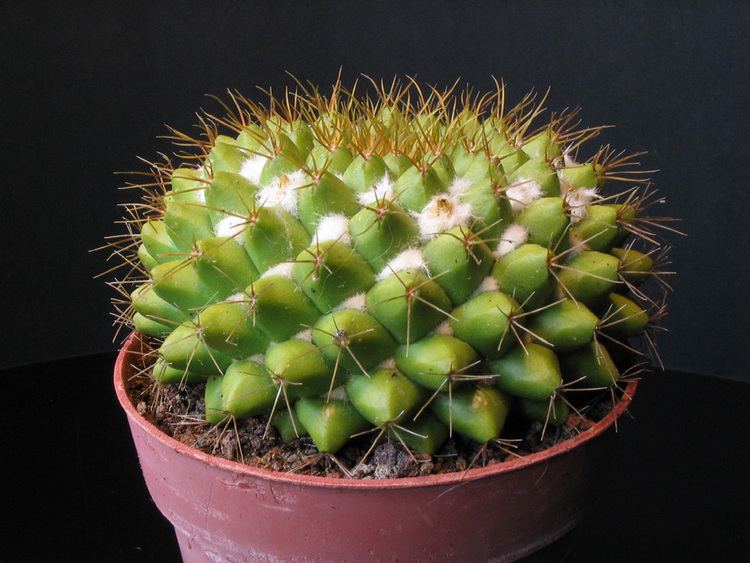 | ||
In anatomy, tubercle is a general term for a round nodule, small eminence, or warty outgrowth found on external or internal organs of a plant or an animal.
Contents
In plants
A tubercle is generally a wart-like projection, but it has slightly different meaning depending on which family of plants or animals it is used to refer to.
In the case of certain orchids and cacti, it denotes a round nodule, small eminence, or warty outgrowth found on the lip. They are also known as podaria (singular podarium). When referring to some members of the pea family, it is used to refer to the wart-like excrescences that are found on the roots.
In mycology, a tubercle is used to refer to a mass of hyphae from which a mushroom is made.
In animals
When it is used in relation to certain dorid nudibranchs such as Peltodoris nobilis, it means the nodules on the dorsum of the animal. These tubercles in nudibranchs can present themselves in different ways: each tubercle in a single rounded, conical or angular form, each tubercle in a compound form of two or more levels, tubercles in amalgamated clusters or as tubercles forming or joined by a ridge.
Tubercles found on the leading edge of humpback whale's flippers were demonstrated to improve fluid flow over the flipper's surface, exhibiting the tubercle effect of fluid dynamics.
In dinosaurs, a tubercle is a general term for the scales seen in skin impressions. In duck-billed dinosaurs, for example, three main types of tubercles are defined: small tubercles with no definite arrangement (ground tubercles); larger, polygonal tubercles (pavement tubercles) up to 1 cm (0.4 in) in diameter, which are grouped into clusters separated by ground tubercles; and limpet-shaped conical scutes.
In humans
Within the human body there are numerous sites where tubercles develop. On bones, they are usually eminences used for muscle connections. Larger tubercles are also known as tuberosities. Within the lungs and on the genitals, tubercles are pathological.
Mouth
Tubercles are usually found behind the last molar in the upper jaw, covered by the gum. Surgery can be done to make tubercles less prominent.
Bones
The humerus of the upper arm has two tubercles, the greater tubercle and the lesser tubercle. These are situated at the proximal end of the bone, that is the end that connects with the scapula. The greater/lesser tubercule are located from the top of the acromion laterally and inferiorly. The radius has two, the radial tuberosity and Lister's tubercle.
The most prominent tubercle of the tibia, a leg bone which is more commonly known as the shinbone or shankbone, is the tibial tuberosity. The tibial tuberosity is located on the tibia's anterior surface, distal to the medial condyle. It creates a bony prominence just below the patella, and can be easily located with the fingers. It creates an attachment point for the ligamentum patellae, or patellar ligament. Other tubercles of the tibia include the medial intercondylar tubercle, the lateral intercondylar tubercle, and Gerdy's tubercle.
On a rib, tubercle is an eminence on the back surface, at the junction between the neck and the body of the rib. It consists of an articular and a non-articular area. The lower and more medial articular area is a small oval surface for articulation with the transverse process of the lower of the two vertebrae which gives attachment to the head. The higher, non-articular area is a rough elevation which gives attachment to the ligament of the tubercle. The tubercle is much more prominent in the upper ribs than in the lower ribs.
Lungs
Tubercles in the lungs develop as a result of infection by the Mycobacterium tuberculosis bacterium in the disease tuberculosis. Granulomas form in the infected tissue and undergo necrosis in the centre. Tubercles are also known as tuberculous nodules. The affected parts develop lesions in the form of small nodules called tubercles, from which the disease gets its name.
Ears
Around the sixth week of gestation, six swellings of tissue called the hillocks of Hiss arise around the area that will form the ear canal. These eventually coalesce to form the outer ear. Darwin's tubercle, is a minor malformation of the junction of the fourth and fifth hillocks of Hiss. It is found in a substantial minority of people and takes the form of a cartilaginous node or bump on the rim of their outer ear, which is thought to be the vestige of a joint that allowed the top part of the ancestral ear to swivel or flop down over the opening to the ear.
Genitals
The genital tubercle is a small bump that eventually develops into a penis or a clitoris on a human fetus.
Brain
The septotubercular tract can be found in the human, as well as in the sheep brain. It is found nearby the septohypothalamic tract. Its function to the brain is ambiguous at this point.
Also the tuberculum sellae is found at the base of the skull, which holds the hypophysis.
